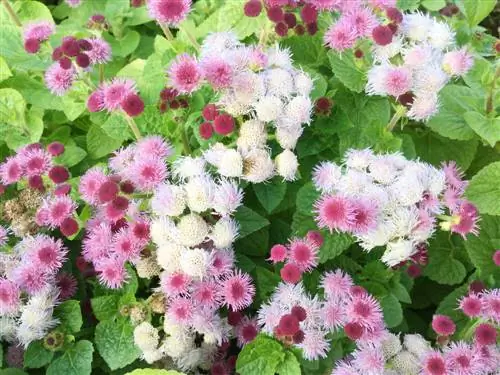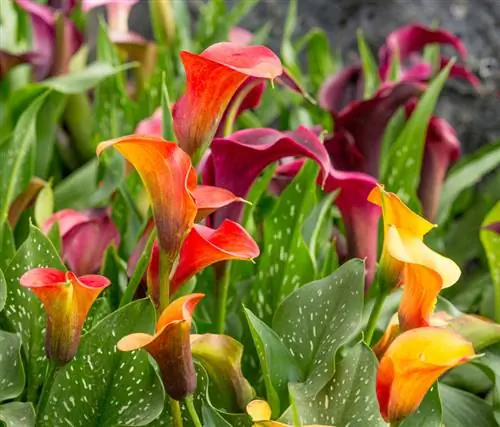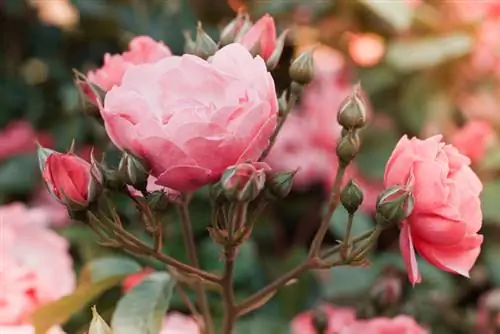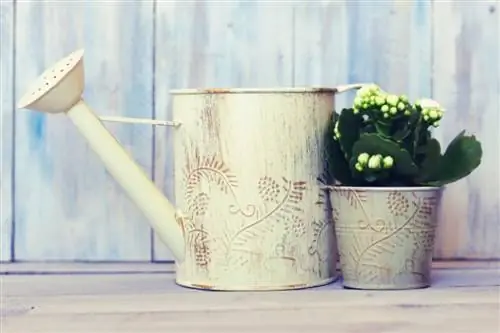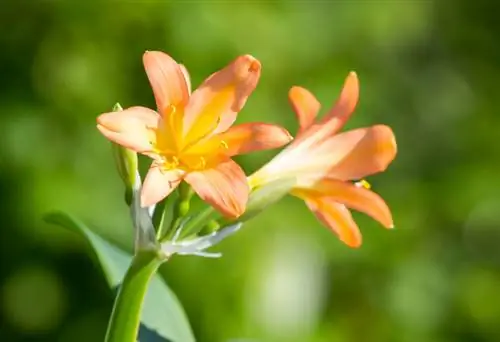- Author admin [email protected].
- Public 2023-12-16 16:46.
- Last modified 2025-01-23 11:21.
Even though liver balm is actually perennial, it is usually offered as an annual plant in garden centers and nurseries. Don't let this put you off and still dare to overwinter the relatively easy-care Ageratum.
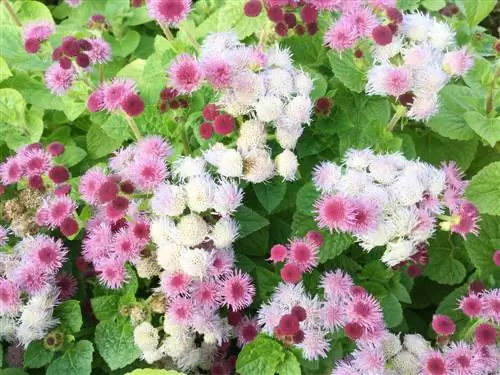
How to properly care for Ageratum (liver balm)?
To properly care for the Ageratum, you need a sunny and warm location, fresh, permeable and nutrient-rich soil. Water the plant thoroughly, but avoid waterlogging. Fertilize every 2 to 3 weeks and cut back spent flowers to encourage the plant to produce new buds.
Location and soil
A warm and sunny location is best suited for the liver balm. Only with sufficient light (at least five hours a day) will flowers bloom as lushly and persistently as you wish.
The soil can be slightly moist, but should not tend to become waterlogged. That's why permeability is important. If you want to overwinter the liver balm, it should be moved to suitable winter quarters in good time before the first frost.
Watering and fertilizing
Pour your liver balm thoroughly, but not too much. Ideally, you do not allow the soil to dry out or “drown”. Waterlogging can quickly cause the roots of your liver balm to rot. Approximately every two to three weeks add a little liquid fertilizer (€18.00 on Amazon) to the irrigation water.
The liver balm as a cut flower
The larger varieties of liver balm in particular are very suitable as cut flowers. The blue, pink, white or violet flowers appear until October or even November if the weather permits. By cutting you can encourage the plant to form new buds.
Diseases and pests
In addition to root rot, which occurs due to soil that is too moist or watered too abundantly, liver balm also occasionally suffers from pest infestation. Spider mites and aphids are particularly important here, but also small aphids and whiteflies. However, with good care and in the right location, this is rarely to be expected.
The most important things in brief:
- sunny and warm location
- fresh, permeable and nutrient-rich soil
- water thoroughly
- fertilize every 2 to 3 weeks
- good cut flowers, especially taller growing varieties
- suitable for planting pots and balcony boxes
- not hardy
- Wintering possible, but buying new is usually cheaper
Tip
Since liver balm is a poisonous ornamental plant, you should think carefully about planting it in a garden where children play.

